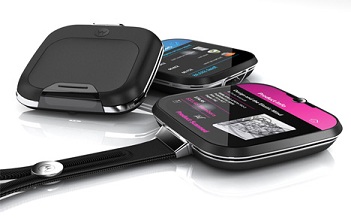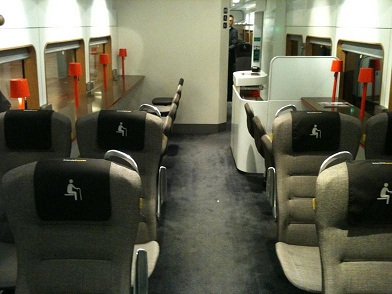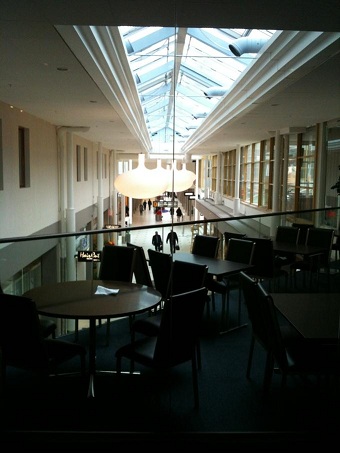Cashless business trip
 Friday evening, I collect things in the usual short trip to customers. It is distinguished only by a new route: to visit Oslo and Stockholm, plus a transfer in Amsterdam. I think about what currency to take with me. Having presented a salad of euro, Norwegian and Swedish crowns in my wallet, I understand: I was bored with currency exchange. After all, Europe, civilization and all that. It was decided: the trip will be non-cash! In a post at the same time I will talk about the nuances of payment cards and payment systems, about which perhaps not everyone knows.
Friday evening, I collect things in the usual short trip to customers. It is distinguished only by a new route: to visit Oslo and Stockholm, plus a transfer in Amsterdam. I think about what currency to take with me. Having presented a salad of euro, Norwegian and Swedish crowns in my wallet, I understand: I was bored with currency exchange. After all, Europe, civilization and all that. It was decided: the trip will be non-cash! In a post at the same time I will talk about the nuances of payment cards and payment systems, about which perhaps not everyone knows.So, armed with a debit Visa Classic and a reserve in euros for a “rainy day”, I set off on the road.
Day One: Norway
There is still time before departure, so after checking the security at the airport, I drop in at the cafe. Coffee, sandwich, card settlement - no questions here. Oh, while I was going through passport control, world prices for coffee jumped, it seems to be about three times.
')
Abroad, I will pay with the same card that will surprise no one. But if you manage to take along a domestic map, a surprise awaits you.
Domestic and International cards
When opening a card account in your bank, do not forget to clarify whether this card will be internal or international. Card currency in this case is not an indicator. Both a ruble and multicurrency card can be both the first and second.
The flight to Oslo with a transfer to Amsterdam passes without any surprises. At Schiphol airport, I spend 2 minutes to buy souvenirs (I pay with a card) and 10 for questioning by an airport employee. That's because, worry about the quality of service! On these flights, unlike many others, even though a sandwich was given. Personally, I am touched by the “interaction” of security services, which, after the events at the London airport, take away any drinks from travelers, and airlines that stop feeding and watering.
Well, okay, after the control there is still duty free and cafes. In extreme cases, it is useful to be able to buy (of course at an exorbitant price) a sandwich or juice on board the aircraft. This is where the map comes in handy, allowing you to make offline transactions.
Offline transaction
Such transactions are used at points of sale where the payment terminal has no connection with the bank (airplane, bus, some taxis). This transaction may be reflected in the balance of the card account not immediately, but after a few days. In this case, the balance check on the card does not occur. The side effect is that you can go into a minus (overdraft on the card), if you "pull" all the money before the completion of the transaction. Offline transactions usually require a Classic level card that is embossing, i.e. card number and owner name are embossed. In deep pre-Internet times, the card in the store was rolled mechanically (the device is called an imprinter), leaving this embossed card number and name of the owner on a paper check (slip), which confirmed the fact of payment.
So, I am in Oslo, the airport Gardemon, I sit on the express to the city. For a long time I thought that this express was called internationally, in English: FlyToGet. And just taking up the Norwegian, I found out that toget is a Norwegian train. Turnstiles at the entrance are equipped with card readers; to buy a ticket, it is enough to hold a card and indicate the destination. One second - and I am "stunned." Without cash registers, paper receipts and other archaisms (although the usual cash desk is also available).

The receipt for confirmation of expenses can be printed on the website of the express, it is enough to know the card number. And pre-register on the site is not necessary - the information is not lost. A curious nuance: in this POS-terminal unauthorized debiting of funds is applied.
Unauthorized write-off
When paying at some outlets, the card is not authorized; for example, when paying toll roads, telephone calls on the card, etc. The main feature of such a transaction is that neither the PIN code nor the signature on the check is required from the cardholder. In such cases, there is also no blocking of funds on the card and checking the available balance, and the amount is withdrawn from the account with a delay. As in the case of offline transactions, you need to monitor the balance on the card in order not to go beyond the overdraft limits. Also, my experience with using SMS banking shows that such transactions do not receive deduction notifications.
After an early flight and informal gatherings until late with customers, tired, I flop to sleep; and then comes
Day Two: Sweden
Checkout at the hotel. This time everything is simple: the hotel is paid in advance through a travel agency. But earlier, when paying with personal cards, I had various cases. Perhaps it is worthwhile to open a reading ball with a collection of cones and a rake.
Hotel payment and card blocking
Upon arrival at the hotel, the guest is asked to present a card with which he will pay for the stay. On the card presented upon arrival, a reservation is made in the amount of the cost of living. When reserving, the availability of a sufficient amount of funds on the card is checked, and this amount is blocked for about 3 weeks (the exact period is determined by the issuing bank of your card). During this time, the seller (in our case, the hotel) must make a request for withdrawal of funds, then the bank deducts the blocked amount from your card and makes a payment. This happens during the check-out from the hotel, if the payment is made with the same card. In the absence of a request for withdrawal after the above three weeks, your bank automatically unlocks the amount, and it becomes available to you again.
In my SMS bank messages, such reservations look like a normal transaction, since the available balance is reduced by the amount of the reservation. It seems that the money has already been written off. If you cannot see the difference either, the call center operator in your bank will help to distinguish these operations.
Warning: sometimes (infrequently) it happens that the debiting takes place as an independent transaction, and the reserved amount is not unblocked. In this case, you seem to pay twice for the hotel (the balance on the card decreases twice). The solution in such a force majeure will be a trip to your bank upon return, where you can leave a statement to unlock the amount before the deadline, i.e. three weeks old. Or just wait for the end of the blocking period. Such a Procida is always unpleasant, especially if the money on the card was end-to-end, but you don’t lose this money: they don’t leave your account. Of course, if such a case occurs, you need to check with the bank - the call center will be very helpful.
I leave the hotel, get an express to the airport. Paying for a return flight with a card on the turnstile, I am ahead of those who are in line to pay for travel in cash. A couple of hours - and I'm in Stockholm.
Stockholm
Pretty airport with a rich set of transport messages. The city can be reached by express, bus and local trains. I buy a ticket for the Arlanda Express in the machine, I pay for the card naturally. The amount is printed on the ticket, so for the advance report of its accounting is enough. The train surprises me with the availability of seats behind the bar - apparently, the plans included a mini-restaurant. It is convenient to sit on these places with a laptop.

By the way, Sweden announced plans to become the first state that will fully switch to electronic money. Already today, the share of cash payments in the country's economy is only 3% - the lowest in the world. The remaining operations are carried out by cards or through mobile payments. For example, by SMS you can buy a ticket for transport. For comparison: in the eurozone, the share of cash payments is 9%, in the USA - 7%.
I settled in a hotel located ... in the supermarket. You can quite seriously say to my wife: “dear, I spent the night in the store”! And in the morning you chew breakfast and watch the early visitors shopping.

Cashless payments in Sweden do not cause questions. I manage to pay with the card even the fare on the ferry. I also purchase a travel card on the subway with a card, but on the second attempt. In the booth of an employee of the metro, only cash is accepted, so for the pass I go to a shop nearby. But you can replenish the balance on the travel card by SMS from the account on the phone.
I think it will not be a surprise to mention that when calculating with a card abroad, the seller may well ask you to present an identity document. By the way, I read to the Internet that he could ask for something, but he could not refuse to be serviced if he was absent - no! This will be a violation of the rules of the VISA payment system (according to MasterCard I will not say - it was not).
Stockholm grieves early closed museums, but it pleases with a stunning sunset on the background of canals and old sailboats.

Check the possibility of card payments in museums will have the next time. After the evening walk, I go to a familiar place with the letter “M” (i.e. McDonald’s) and replenish carbohydrates. And here I’m waiting for the only surprise for the whole trip: the entrance to the toilet in this restaurant is paid. And for cash! I am rescued by an employee of the restaurant; he notices my confusion and opens the door for me.
I believe that it is micropayments that will be the main difficulty in the full transition to electronic money. In addition, anonymous offline transactions with electronic money will be requested. The decision, in my opinion, will consist of prepaid bearer debit cards. I got it in a kiosk — I’ve exhausted the balance — I threw it away.
A couple of days in Sweden fly quickly, it's time to go home. On the way back, the route goes through duty free, where I stock up on candy for the kids. At the checkout, a smart POS terminal after rolling a card offers me to choose the currency of the card (Ukrainian hryvnia) or the currency of the country (Swedish krona) as the currency of payment.
Payment currency
The amount in Ukrainian hryvnia, which has already been kindly chosen by default - 520, in Swedish krona - 417. I choose crowns - and the purchase is cheaper for me: 511 hryvnia. Please note: the currency of the transaction is converted by the payment system into the billing currency for invoicing the bank (USD for VISA, EUR for MasterCard); and then by the bank in the currency of the card account. In the case of a transaction in the “native” currency of the card, there will be two such conversions, and this is usually more expensive. In addition, in this case, you depend on the conditions of conversion of the payment system.
Hence the recommendation: if you pay in dollars with a VISA card or in euros with MasterCard, then you save on payment, because There will be only one conversion.
In some cases, the commission when paying with the “native” currency of the card at foreign points of sale may turn out to be simply exorbitant. Therefore, the recommendation is simple: give preference to payments in the local currency of the host country, otherwise check the adequacy of the final amount.
Those who have read this post to the end may wonder: is it profitable to pay with a card? Where are the calculations and comparisons? Without going into details, I will say that, according to my calculations, the commissions of exchangers when converting cash are not very different from the commissions on the card. The most profitable for payments in the Eurozone are MasterCard cards with a card currency in euros. I will add that withdrawing cash from an ATM abroad is not profitable - high commission. In general, this is more a matter of convenience.
The security of card payments is also a very important issue, but is beyond the scope of the article.
By the way, quite recently I had the opportunity to attend a match at the reconstructed Olympic NSC, which will host the Euro 2012 final. There are a lot of impressions, and all are positive. Technological progress has reached here: there are non-cash payments in the stadium. The system works on the basis of contactless cards, which must be previously purchased and replenished on the territory of the stadium. The only thing that bothered me was that people (employees in a special form) bought and refilled cards. For perfection of the process, there are not enough machines to replenish these very cards. It will also be interesting to follow the use of contactless payments at the London Olympics - they took NFC chips as a basis.
My flight lands at my home airport. On the way, I’ll have to call in a flower shop for a bouquet to my wife. Well, here I am at home - it's time to look for an ATM and withdraw cash :).
Additional information and sources in preparation
- Own experience (no link)
- Description of VISA card types
- Oslo Airport Flytoget Express website
- Anatomy of Map Operations Abroad: Traveler Notes
- In the first picture: Motorola Sparrow conceptual mobile POS terminal
Source: https://habr.com/ru/post/143942/
All Articles